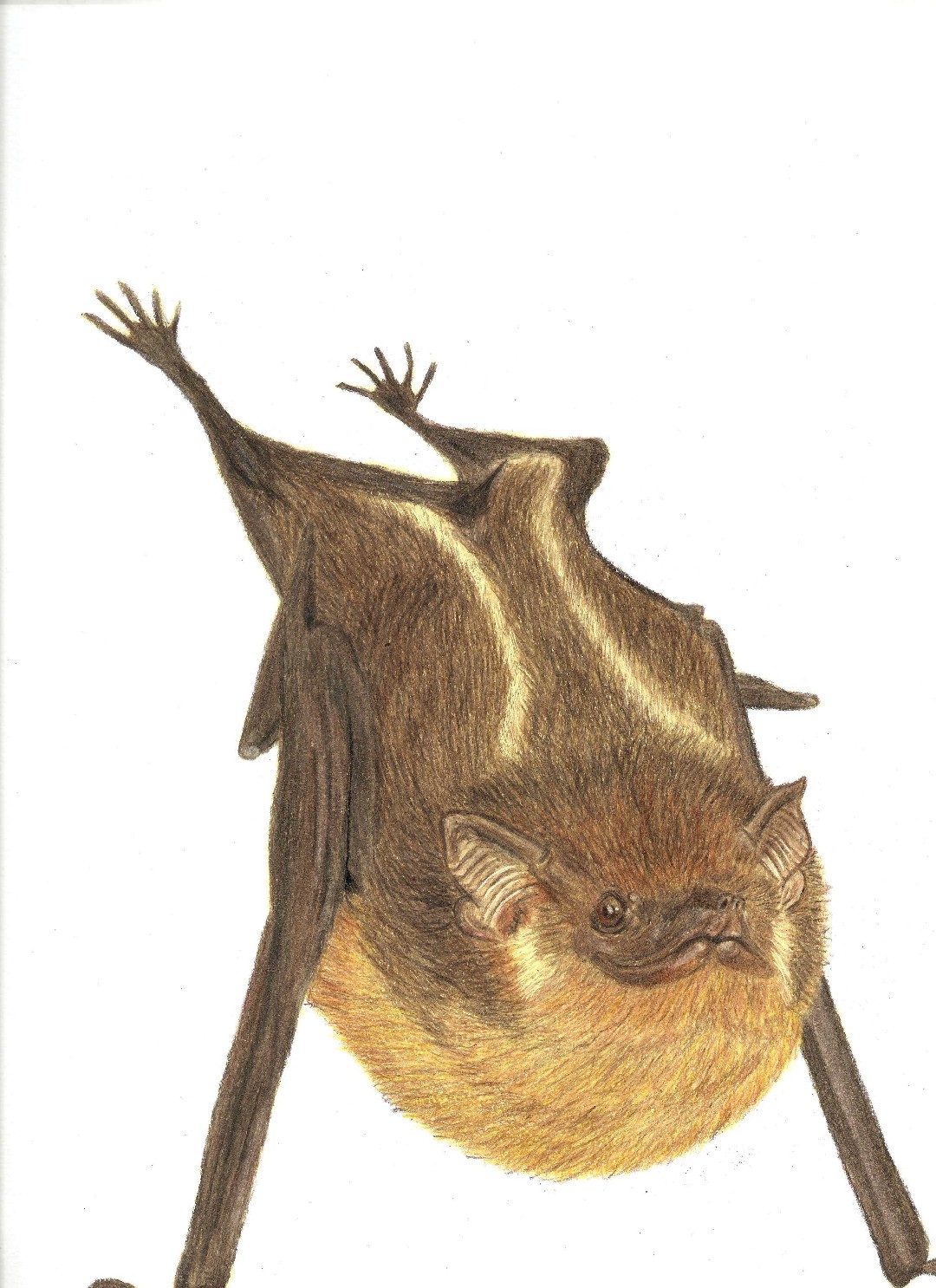Greater sac-winged bat
A species of Saccopteryx Scientific name : Saccopteryx bilineata Genus : Saccopteryx
Greater sac-winged bat, A species of Saccopteryx
Scientific name: Saccopteryx bilineata
Genus: Saccopteryx
Content
Description General Info
 Photo By Juliana Tabares Medina , used under CC-BY-SA-3.0 /Cropped and compressed from original
Photo By Juliana Tabares Medina , used under CC-BY-SA-3.0 /Cropped and compressed from original Description
The greater sac-winged bat (Saccopteryx bilineata) is a bat of the family Emballonuridae native to Central and South America. They are the most common bats seen in the rainforest, as they often roost on the outside of large trees. They are insectivores and use echolocation calls through the mouth to track their prey. The long nose and upper lip are highly mobile and can shift upward to enlarge the mouth opening. The term "sac-winged" refers to small pouches on the wings of S. bilineata. These sacs are used by males to attract females and to mark their harem territory. During daily grooming, males will fill these sacs with drops of urine and glandular secretions. During displays for females, the male will hover in front of the female and fan her vigorously to expose her to the scent of the mixture in the wing sacs. Males will also shake the contents of the sac towards bats outside of the male's harem territory to warn off intruders. Microbial fermentation in the sac may produce identifiable scent signals. Sac-wing pups have been recorded vocalizing various calls and sounds in a jumbled context. For example, a female pup will give the male trill of courting followed by echolocation clicks then adult territorial challenges. These mixed-up vocalizations have been equated with human infant babbling and mispronounced songs of young birds. This is the first example of mammal babbling outside of the primate order. 
General Info
Lifespan
6 years
Diet
Greater sac-winged bat primarily feeds on small insects, particularly those attracted by fruits. This bat hunts in swift, agile flights, expertly catching prey mid-air. Its dietary preferences are nocturnal, correlate with fruiting seasons, and are crucial for ecosystem balance.
Appearance
Greater sac-winged bat is a small, mammal with a lean, streamlined body covered in fur, predominantly brown in color with two distinct white lines running longitudinally from the head to the tail. Equipped with wings and a tail, its most prominent feature is its enlarged rostrum - a protruding, leaf-like structure on its nose. Both males and females sport these characteristics and there's not much difference in their appearance.
Behavior
Greater sac-winged bat is a nocturnal species that roosts in groups during the day. This social bat performs vocal performances both for territory defense and to attract mates. Males actively patrol and defend their territories from intruders. Greater sac-winged bat is notable for its pup-rearing assistance, where non-mother females 'babysit' pups, showcasing cooperative social behavior.
Scientific Classification
Phylum
Chordates Class
Mammals Order
Bats Family
Sac-winged bats Genus
Saccopteryx Species
Greater sac-winged bat